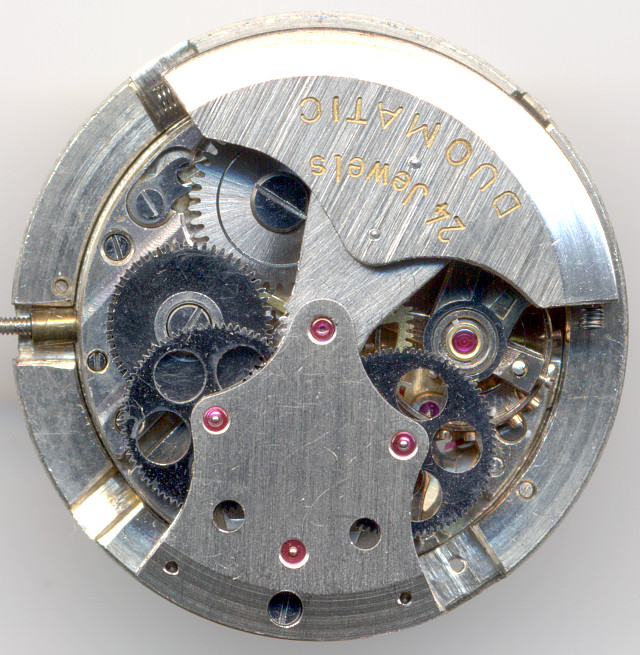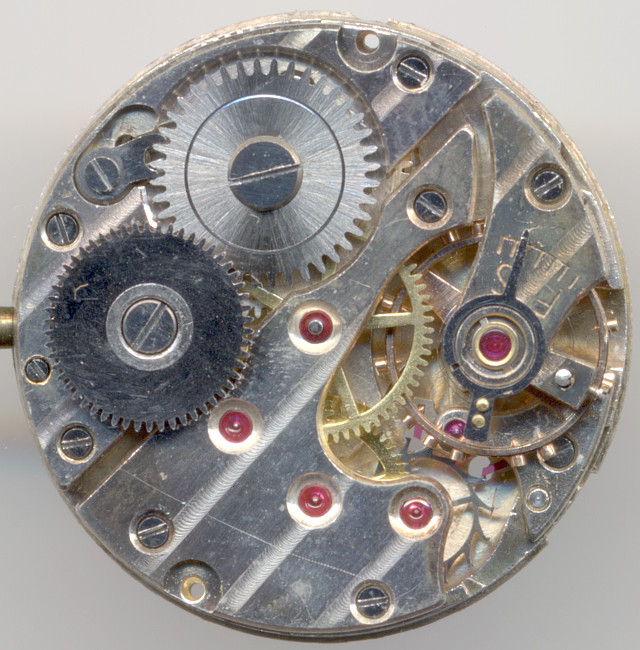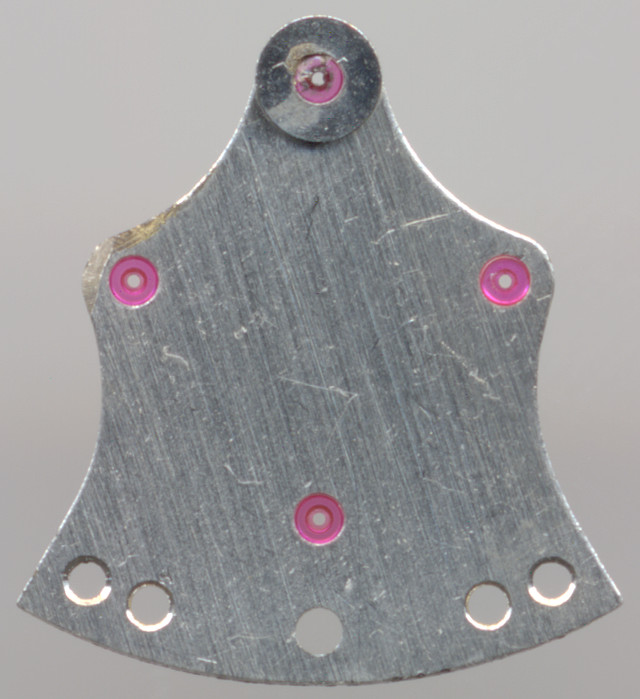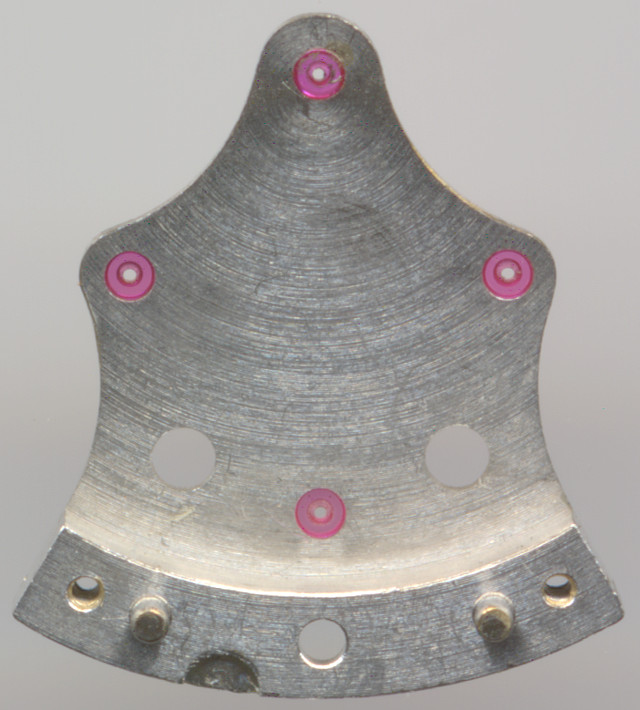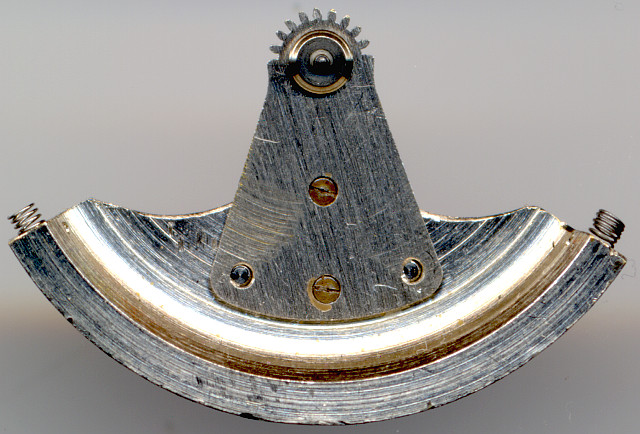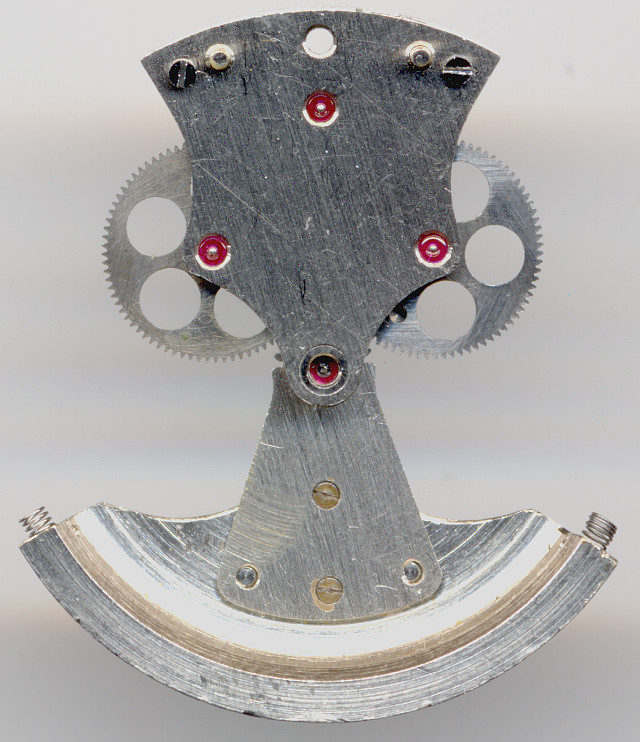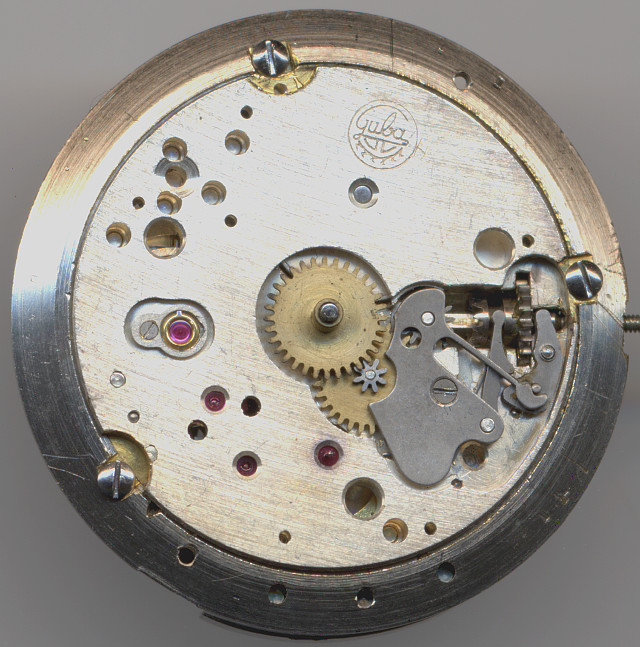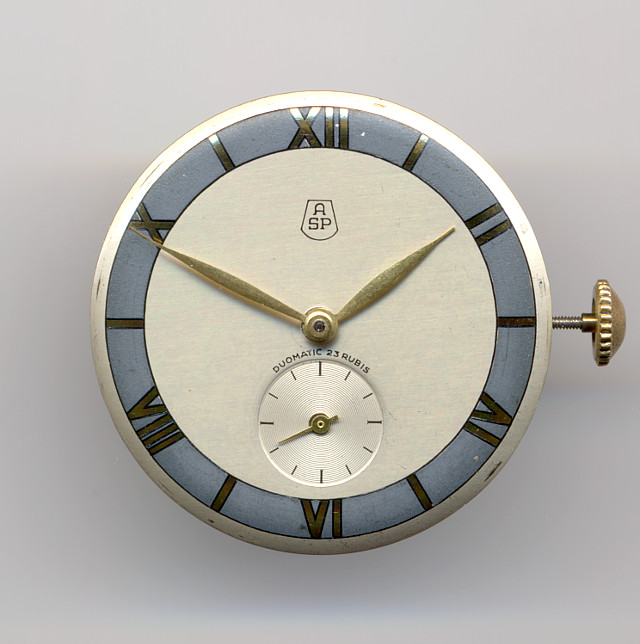Description
The first selfwinding movement from Germany is usually attributed to Bifora with their caliber 103 SA (its updated version, the Bifora 103 SA new can be seen in the archive), launched in 1951. As for mass-production, this is correct, but the very first german selfwinding movement is the “Duomatic” from August Spetzler, which was made as a prototype in 1950 and was patented the same year.
Its production figures are unknown, and also, whether is was just a prototype or available for sale.
As base movement, the Guba 1050, though with decentral second instead of a center second, was used.
Presumably, different base movements were used for the “Duomatic” selfwinding movements.
The “Duomatic” pendulum selfwinding module is mounted together with a 13 ligne ring around the movement. The base caliber is left untouched except the swap of the crown wheel to a double crown wheel, whose upper gears engage with one of the two exchange wheels of the module. Its engagement depth is adjusted only by the position of the ring, a not very trustful method.
The lower selfwinding bridge, which is located on top of the gear bridge and secured by two screws on the movement ring, has got four bearing rubies, one for the pendulum axis, two for the two exchange wheel and one for the segment driver, which is engaged with the pendulum and whose pawls are responsible for driving the two exchange wheels always in the same direction.
It’s pretty bad, that the selfwinding mechanism is not detached when the movement is manually wound, so both pawls have to work really hard. Besides the the manual winding works sluggishly, the resulting wear will certainly harm the mechanism pretty soon.
The upper bridge also contains four jewels, so that the whole selfwinding mechanism adds four jewels to the movement. The Guba 1050 SC, which has got 16 jewels, finally has got 24 rubies, which is engraved on the pendulum. The lower number of 23 jewels on the dial (see in the usage gallery) is an indication, that this module was also used on other base movements, maybe only as a prototype.
The pendulm has got a 90° heavy metal rim with two buffering springs, a typical construction for pendulum automatic movements.
The actual “Duomatic” mechanism from Spetzler (ASP) is the module with pendulum and the two changer wheels.
If you look at the ASP Duomatic Guba 1050 from the dial side without selfwinding module, you have nothing but the base caliber, here a plain Guba 1050 SC with a Super Shock Resist protection for the gold toned screw balance.
To fix the module ring on the movement, three indents were engraved and it looks pretty much like a prototype the lacking fine machining.
It would be exciting to know if the movement shown here is a prototype and so a real rarity, or if it belongs a (for sure only small) series production which was either too costly or too problematic. In any case, this movement was never nade in large quantities. And also the above-mentioned structural disadvantages would deny a use in larger quantitie.
August Spetzler moved into the United States in the early 1950s to work there as development manager at Timex, where he worked for the introduction of their quartz watch.
In the lab
The only thing, which is sure is, that is pendulum axis is broken, and so it cannot be a new old stock movement, which nobody ever touched.
Technical data
| Manufacturer: | ASP |
| Caliber: | Duomatic Guba 1050 |
| Size: | 13''' (measured: 29,3mm) |
| A/h: | 18000 |
| Number of jewels: | 24 |
| Escapement: | Pallet lever |
| Balance types: |
Nickel screw balance |
| Shock protection(s): |
Super Shock Resist |
| Balance bearing / direction hairspring: | Clockwise |
| Moveable stud: | no |
| Adjust mechanism: | Long regulator arm |
| Construction: |
|
| Construction type: | solid construction |
| Winding mechanism: | yoke winding system |
| Setting lever spring: | 4 hole(s) |
| Features: |
|
| Production period: | 195x |
| Inventory number: | 18023 |
